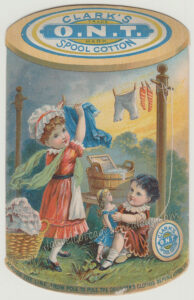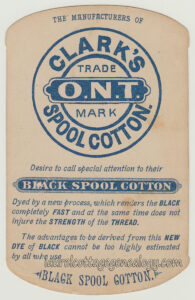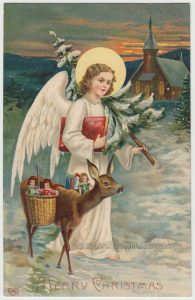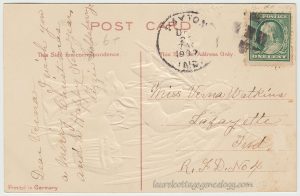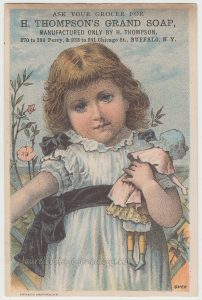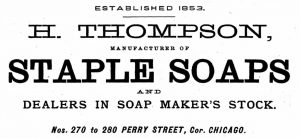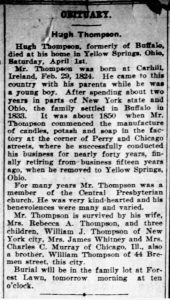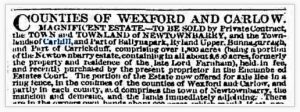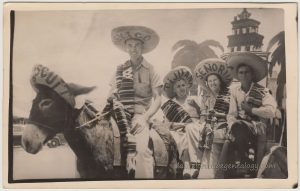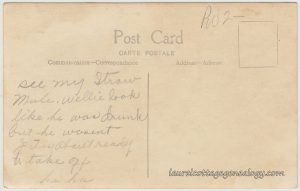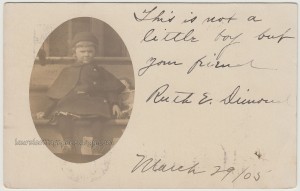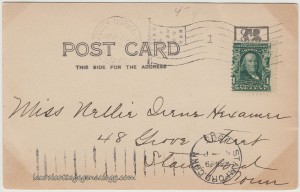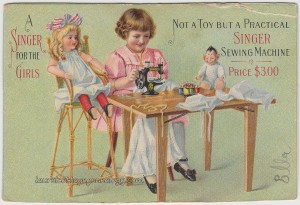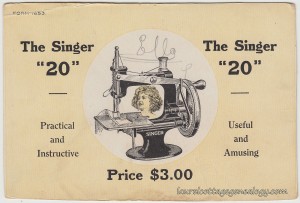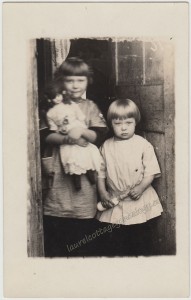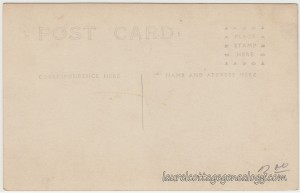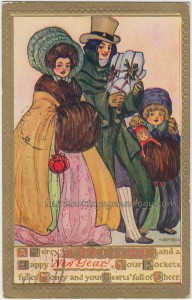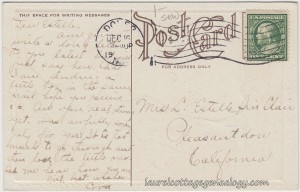Trade card for Clark’s O.N.T. Spool Cotton. Lithograph, M & K Company. Circa 1880’s – 1890’s.
Price: 12.00 Size: About 2 and 3/4 x 4 and 1/4″
“Across the line from pole to pole the children’s clothes depend upon it.”
A gorgeous design for this one and clever. It’s a windy day. (Those clothes will dry pretty quick!) Actually, it looks like a storm’s coming in – maybe a further illustration of the point – strong thread, strong enough to make a clothesline 😉 and withstand the storm. If the back had no wording and you were just looking at the shape, would it make you think of a spool of thread? Maybe so.
O.N.T. stands for Our New Thread. See Sources below.
At the bottom right the print reads, “Copyright Secured” and at the bottom left is the lithographer name of M & K Co.
Major & Knapp
M & K was the very successful New York City lithography firm of Major & Knapp. The company began life as Sarony & Major, headed by lithographer, artist, draftsman (and later photographer), Napoleon Sarony. Major was James Major and then brother, Henry B. Major. The name then changed to Sarony, Major & Knapp (sometimes called Sarony & Co.) and then when Sarony left the firm in 1858, it became Major & Knapp, the full name of which seems to have been The Major & Knapp Engraving, Manufacturing and Lithographic Company, but we often see them as the Major & Knapp Co. and Major, Knapp & Co. And here it’s unclear whether that last was an actual name change or just sometimes reported incorrectly. Major were brothers Henry Broughman Major and Richard Major and Knapp was Joseph F. Knapp.
Sources: Clark O.N.T. Thread. historyatyourfingertips.education. (accessed December 19, 2023).
Coats Group. n.d. https://en.wikipedia.org/wiki/Coats_Group (accessed December 19, 2023).
Napoleon Sarony. n.d. https://en.wikipedia.org/wiki/Napoleon_Sarony (accessed December 19, 2023).
Spooner, Ken. (2010). “The Knapps Lived Here.” Elm & McKinley Books, New York. Google.com books.
“Sarony, Major & Knapp: New York City Lithographers.” https://ahpcs.org/publisher/sarony-major-knapp/ (accessed December 16, 2023).
The National Archives and Records Administration; Washington, D.C.; Internal Revenue Assessment Lists for New York and New Jersey, 1862-1866; Series: M603; Roll: 56; Description: District 4; Monthly and Special Lists; June-Dec 1865; Record Group: 58, Records of the Internal Revenue Service, 1791 – 2006.

